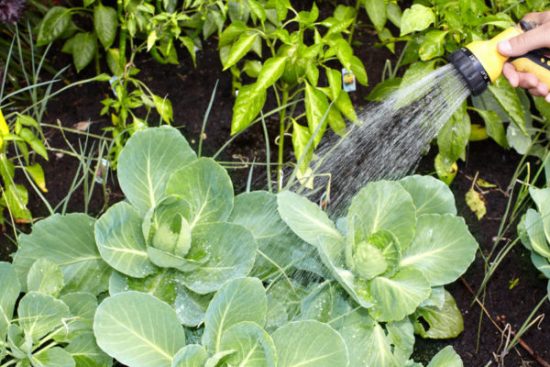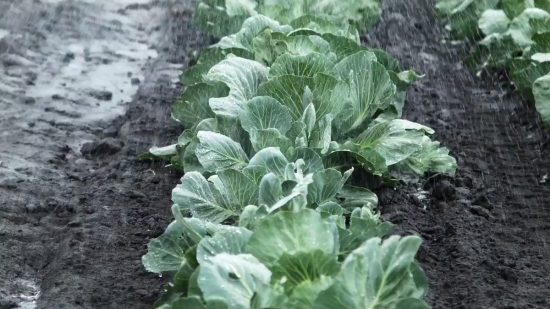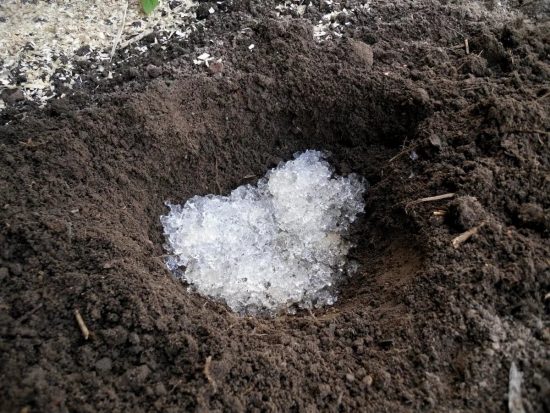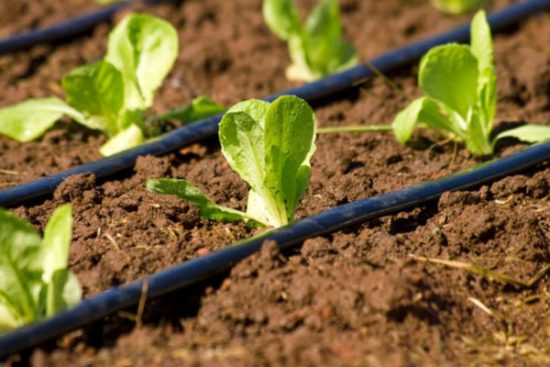Cabbage in open ground requires frequent and abundant watering. The watering rate gradually increases towards the end of the season, but as the heads of cabbage grow, you cannot overwater the plot, otherwise they will crack.
|
The crop should not be overdried, otherwise it will form small, loose, unsalable heads, and cauliflower and broccoli will not set inflorescences at all. |
Seedlings at home are watered 2 times a week, in a greenhouse - as the soil dries, usually 2-4 times a week. The watering rate for greenhouse seedlings is 0.5 liters per plant, for young plants 1.0-1.5 liters.
Watering is done with ordinary cold water. Cabbage, even seedlings, do not like warm water; it is less absorbed by the roots.
After planting seedlings in open ground until a new leaf appears, the plot is watered abundantly daily. After rooting, watering is carried out once a week in cloudy weather, and 2-3 times a week in sunny and dry weather.
As the crop grows, both the watering rate and frequency increase. The watering rate for white cabbage is 2.0-2.5 l, for cauliflower and broccoli 1.5-2.0 l. In hot weather, the watering rate doubles, since the evaporation of water from the surface of the leaves increases greatly.
Water the plot at this time 2-3 times a week, and in extreme heat and drought daily.
During thunderstorms, the plot is watered as usual, since such rains do not wet the soil. And even with prolonged, but not heavy rains, cabbage is watered 2 times a week, since in adult plants the leaves close together between neighboring specimens and the rain does not sufficiently wet the ground.
When forming heads and heads, watering is done 3 times a week. The consumption rate for cabbage varieties is 3-5 liters per plant, for cauliflower and broccoli 3.5-4 liters.
|
Only heavy and prolonged rains can fully water the cabbage |
But if the weather is rainy, water the plot once a week, otherwise the heads of cabbage will crack and the heads will crumble. In case of heavy, prolonged rains, watering is stopped, and the plot is loosened to remove excess moisture from the soil.
A month before harvesting cabbage, watering is reduced to 2, and then once a week, reducing the watering rate to 1.0 liters per plant. Do not water the cabbage 5 days before harvesting.
If the cabbage remains in the garden until late autumn, watering is carried out as usual 2 times a week. It is necessary to water as long as the temperature outside is positive. Even at + 1°C, watering is done if required.
How to simplify care and reduce the number of waterings
In the southern regions, planting cabbage on hydrogel makes maintenance much easier. It consists of white balls that, when moistened, absorb a large volume of water, increase several times in size and become jelly-like.
As the culture grows, the roots grow into the hydrogel and take from it as much moisture as needed. The hydrogel is safe; after a season of use, the remaining granules completely dissolve in the soil.
|
When planting seedlings, make the hole deeper and wider, add hydrogel there and mix it with soil, then plant the seedlings and water them. |
Watering is carried out every day until the seedlings take root. And then the cabbage can be watered once every 2 weeks; the moisture contained in the hydrogel is enough for it.
And only in extreme heat should the crop be watered once a week. Fertilizing is also reduced by 2 times, since once in the hydrogel, the fertilizers are not washed into the lower layers, but will be available to the plants for a long time.
|
The drip irrigation device greatly saves time and simplifies crop care |
Drip irrigation can greatly simplify growing. With its help, the earth is always kept moist, but not over-moistened.





 CUCUMBERS NEVER GET SICK, I'VE BEEN USING ONLY THIS FOR 40 YEARS! I SHARE A SECRET WITH YOU, CUCUMBERS ARE LIKE THE PICTURE!
CUCUMBERS NEVER GET SICK, I'VE BEEN USING ONLY THIS FOR 40 YEARS! I SHARE A SECRET WITH YOU, CUCUMBERS ARE LIKE THE PICTURE! You can dig a bucket of potatoes from each bush. Do you think these are fairy tales? Watch the video
You can dig a bucket of potatoes from each bush. Do you think these are fairy tales? Watch the video
 How our fellow gardeners work in Korea. There is a lot to learn and just fun to watch.
How our fellow gardeners work in Korea. There is a lot to learn and just fun to watch. Eye trainer. The author claims that with daily viewing, vision is restored. They don't charge money for views.
Eye trainer. The author claims that with daily viewing, vision is restored. They don't charge money for views. A 3-ingredient cake recipe in 30 minutes is better than Napoleon. Simple and very tasty.
A 3-ingredient cake recipe in 30 minutes is better than Napoleon. Simple and very tasty. Therapeutic exercises for cervical osteochondrosis. A complete set of exercises.
Therapeutic exercises for cervical osteochondrosis. A complete set of exercises. Which indoor plants match your zodiac sign?
Which indoor plants match your zodiac sign? What about them? Excursion to German dachas.
What about them? Excursion to German dachas.